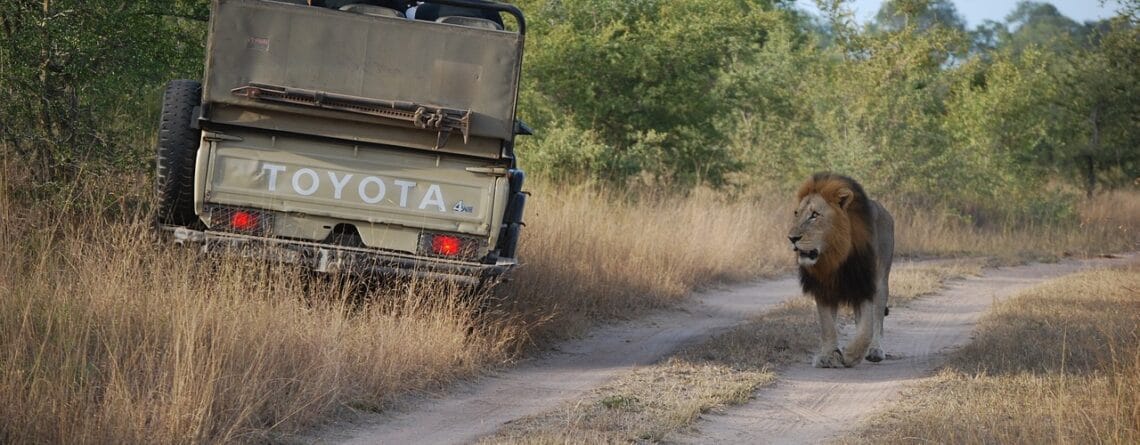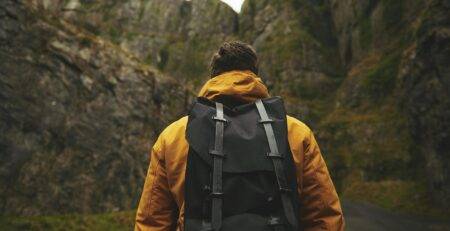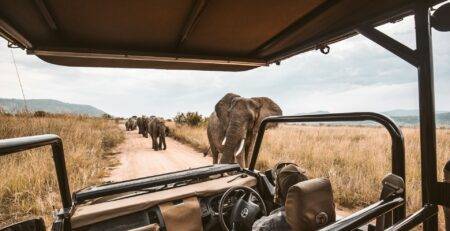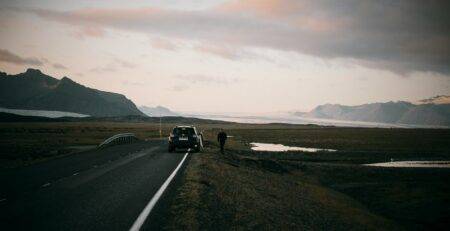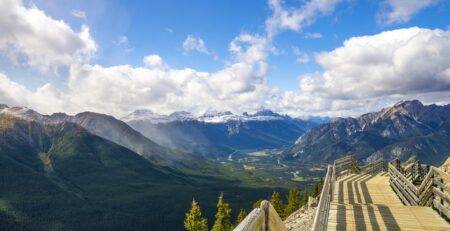Going on a safari is an exciting adventure filled with beautiful landscapes and amazing wildlife. However, to make the most of your trip, there are some important tips you should keep in mind. From what to pack to how to act in the wild, these tips will help ensure you have a safe and enjoyable experience. Here are ten essential safari tips every traveler should know before setting out.
Key Takeaways
- Always apply bug spray to avoid insect bites.
- Use sunscreen to protect your skin from the sun.
- Wear natural colors to blend in with the environment.
- Pack light and choose durable luggage.
- Learn a few Swahili phrases to connect with locals.
1. Bug Spray
When I set out on my safari adventure, one of the first things I packed was bug spray. Insects can be a real nuisance, especially the notorious tsetse fly. To keep them away, I made sure to bring plenty of insect repellent. If you’re checking a bag, you can take full-sized spray cans, but if you’re like me and prefer to travel light with just a carry-on, here’s a tip: insect repellent wipes are a game changer! They are compact, easy to use, and you can bring as many as you want. I personally used Ben’s wipes, and they worked wonders.
For extra protection, consider spraying your clothes with permethrin before your trip. This can help keep bugs at bay even more effectively.
Packing Tips:
- Choose wipes over spray for carry-on travel.
- Consider permethrin for clothing treatment.
- Check with your doctor about any necessary vaccinations or medications for insect-borne illnesses.
Remember, staying comfortable and bite-free can make your safari experience much more enjoyable!
2. Sunscreen
When I think about preparing for a safari, sunscreen is one of the most important items on my list. Even if the weather feels cool, the sun can be quite strong, especially in open areas. Here are a few tips I always keep in mind:
- Choose a high SPF: I usually go for at least SPF 30 to ensure I’m well protected.
- Reapply regularly: I make it a point to reapply every two hours, especially after being in the water or sweating.
- Don’t forget sensitive areas: I pay extra attention to my nose, ears, and the back of my neck, as these spots can burn easily.
| SPF Level | Protection Duration | Recommended Use |
|---|---|---|
| 15 | 1-2 hours | Light exposure |
| 30 | 2-3 hours | Moderate exposure |
| 50 | 3-4 hours | High exposure |
Remember, protecting your skin is just as important as enjoying the wildlife. A sunburn can ruin your safari experience!
In addition to sunscreen, I also pack a hat and sunglasses to shield my face and eyes from the sun. Staying safe from the sun allows me to fully enjoy the breathtaking sights and sounds of the safari without discomfort.
3. Natural Colors
When preparing for a safari, choosing the right colors to wear is crucial. I learned that wearing natural colors helps me blend into the environment, which is important for not startling the wildlife. Here are some key points to consider:
- Opt for neutral shades like khaki, olive green, and beige. These colors are less likely to attract attention from animals.
- Avoid bright colors such as red and black, as they can agitate wildlife. Blue is also a no-go because it attracts insects like tsetse flies.
- If you plan on going on bush walks, remember that black and white are considered “danger” colors in the wild.
In addition to color, the type of fabric matters. Lightweight and breathable materials like cotton and linen are ideal for comfort and adaptability to changing temperatures throughout the day.
Dressing appropriately not only enhances your experience but also shows respect for the wildlife and their habitat.
By following these tips, I ensure that my safari adventure is both enjoyable and safe, allowing me to fully immerse myself in the beauty of nature without causing unnecessary disturbances.
| Color Type | Recommendation |
|---|---|
| Neutral Colors | Khaki, Olive Green, Beige |
| Avoid Colors | Red, Black, Blue |
| Fabric Type | Cotton, Linen, Breathable Synthetics |
4. Lightweight Clothing

When I think about going on a safari, one of the first things that comes to mind is the importance of lightweight clothing. The weather can change quickly, so I always pack layers. Here’s what I consider essential:
- Neutral Colors: I choose colors like khaki, beige, and olive green. These help me blend in with the environment and avoid attracting unwanted attention from insects and animals.
- Breathable Fabrics: I prefer materials like cotton and linen. They keep me cool during the day and are comfortable for long hours in the vehicle.
- Layering Options: Mornings and evenings can be chilly, so I always bring a light jacket or scarf. This way, I can adjust to the temperature changes easily.
| Item | Purpose |
|---|---|
| Lightweight Shirt | Keeps me cool |
| Cargo Pants | Durable and comfortable |
| Closed-Toe Shoes | Protects my feet on walks |
| Hat | Shields me from the sun |
| Sunglasses | Protects my eyes from glare |
Packing light is key. I often remind myself that I don’t need a lot of clothes; just the right ones will do!
5. Camera Equipment
When I think about going on a safari, one of the first things that comes to mind is my camera equipment. Capturing the beauty of wildlife is a big part of the adventure, and having the right gear can make all the difference. Here are some tips I’ve learned:
1. Choose the Right Camera
- DSLR or Mirrorless: If you have experience, a DSLR or mirrorless camera is great for high-quality photos.
- Point-and-Shoot: If you’re not familiar with complex cameras, a good point-and-shoot can still take amazing pictures.
- Smartphone: Don’t underestimate your phone! Many smartphones have excellent cameras, but remember to check battery life.
2. Bring Extra Batteries and Memory Cards
- Batteries: Safari days can be long, and you might not have access to charging stations. Bring at least two extra batteries.
- Memory Cards: I always pack multiple memory cards. You don’t want to run out of space when you see something incredible!
3. Use a Telephoto Lens
- A telephoto lens is essential for capturing wildlife from a distance. It allows you to get close-up shots without disturbing the animals.
4. Rent Equipment if Needed
- If you don’t own a good camera, consider renting one. It’s a cost-effective way to get high-quality gear for your trip.
Remember, the goal is to enjoy the experience. Don’t stress too much about getting the perfect shot. Sometimes, just being there is enough!
6. Binoculars

When I go on safari, I always make sure to pack a good pair of binoculars. They are essential for spotting wildlife from a distance. Here’s why I think they are a must-have:
- Closer Views: Binoculars help me see animals that are far away, making it easier to enjoy their beauty without disturbing them.
- Bird Watching: I love birding, and binoculars allow me to spot colorful birds that I might miss otherwise.
- Details Matter: With binoculars, I can see the details of an animal’s fur or feathers, which adds to the experience.
Choosing the Right Binoculars
When selecting binoculars, I consider a few important features:
| Feature | Description |
|---|---|
| Magnification | Look for 8x to 10x for a good balance |
| Lens Diameter | A larger lens (42mm) gathers more light |
| Weight | Lightweight options are easier to carry |
Tips for Using Binoculars
Here are some tips I follow to get the most out of my binoculars:
- Practice Beforehand: I make sure to practice using them before the trip.
- Keep Them Handy: I always have them within reach during game drives.
- Stabilize: I try to keep my hands steady for clearer views.
Binoculars can truly enhance your safari experience, allowing you to see the wildlife in a way that feels personal and intimate. Adventure awaits!
7. Durable Luggage

When preparing for a safari, choosing the right luggage is crucial. I’ve learned that durable luggage can make a big difference in how smoothly your trip goes. Here are some key points to consider:
- Material Matters: Look for bags made from tough materials that can withstand rough handling.
- Size and Weight: Opt for lightweight options that are easy to carry but still spacious enough for your essentials.
- Water Resistance: Consider luggage that can handle unexpected rain or splashes from the safari vehicle.
| Feature | Importance |
|---|---|
| Durability | Ensures your belongings stay safe |
| Lightweight | Easier to carry and manage |
| Water Resistance | Protects against the elements |
Packing smartly with durable luggage not only protects your items but also enhances your overall safari experience. It allows you to focus on the adventure ahead without worrying about your gear.
8. Swahili Phrases

When I traveled to East Africa, I quickly learned that knowing a few Swahili phrases can make a big difference. Not only does it show respect for the local culture, but it also helps in connecting with the people. Here are some essential phrases I found useful:
- Habari – “Hello”
- Kwaheri – “Goodbye”
- Ndio – “Yes”
- Sawa – “Okay”
- Hapana – “No”
- Tafadhali – “Please”
- Asante – “Thank you”
- Karibu – “You’re welcome”
- Samahani – “I’m sorry”
- Sijui – “I don’t know”
Why Learn These Phrases?
Learning these phrases can enhance your safari experience. People appreciate it when you try to speak their language. It opens doors to friendly interactions and can even lead to unique experiences.
A little effort goes a long way. Speaking even a few words in Swahili can make locals more welcoming and eager to share their culture with you.
Quick Reference Table
| Swahili Phrase | English Translation |
|---|---|
| Habari | Hello |
| Kwaheri | Goodbye |
| Ndio | Yes |
| Sawa | Okay |
| Hapana | No |
| Tafadhali | Please |
| Asante | Thank you |
| Karibu | You’re welcome |
| Samahani | I’m sorry |
| Sijui | I don’t know |
9. Tipping Guides
When I go on safari, I always remember that tipping my guides is important. It’s a way to show appreciation for their hard work and dedication. Here’s what I’ve learned about tipping:
How Much to Tip
Typically, I tip my safari guide between $10 and $15 per day. However, the amount can vary based on my experience and satisfaction. Here’s a quick breakdown:
| Service | Suggested Tip |
|---|---|
| Safari Guide | $10 – $15/day |
| Driver | $5 – $10/day |
| Cook (if applicable) | $5 – $10/day |
Why Tipping Matters
- Acknowledges Effort: Guides often wake up early and stay late to ensure we have a great experience.
- Encourages Quality Service: When I tip well, it motivates them to continue providing excellent service.
- Supports Local Economy: Tipping helps local guides and their families, contributing to the community.
Tipping is not just a custom; it’s a way to express gratitude for the unforgettable experiences they create.
In conclusion, budgeting for tips is essential when planning my safari. It’s a small gesture that can make a big difference in someone’s life and enhances my overall experience.
10. Safari Etiquette
When I think about going on a safari, I realize that how I behave matters a lot. Following proper etiquette not only makes the experience better for me but also for everyone around me. Here are some important points to keep in mind:
- Stay Inside the Vehicle: It’s crucial to remain inside the vehicle at all times. Getting out can be dangerous, as wild animals are unpredictable.
- Be Quiet: Keeping noise to a minimum is essential. Loud voices can scare away wildlife and disturb others.
- Respect Wildlife: Always keep a safe distance from animals. I should never try to provoke or disturb them for a better photo.
| Etiquette Tip | Why It Matters |
|---|---|
| Stay Inside the Vehicle | Safety for me and the animals |
| Be Quiet | Helps in observing wildlife |
| Respect Wildlife | Preserves natural behavior of animals |
Remember, I’m a guest in their home. Treating the environment and its inhabitants with respect is key to a successful safari experience.
By following these guidelines, I can ensure that my safari adventure is enjoyable and respectful for everyone involved. Let’s make the most of this incredible journey!
Final Thoughts on Your Safari Adventure
Going on a safari is an exciting journey that can create memories for a lifetime. By following these ten tips, you can make your trip safe and enjoyable. Remember to pack lightly, respect the wildlife, and listen to your guides. Tipping your guides shows appreciation for their hard work. Most importantly, soak in the beauty of nature and enjoy every moment. With the right preparation, your safari will be an adventure you’ll cherish forever.
Frequently Asked Questions
What should I pack for a safari?
Make sure to bring lightweight clothing, bug spray, sunscreen, and a good camera. It’s best to pack only what you need.
Why is bug spray important on a safari?
Bug spray helps keep away annoying insects, like mosquitoes and tsetse flies, which can ruin your experience.
What colors should I wear on a safari?
It’s best to wear natural colors like khaki, brown, and olive. Bright colors can scare animals and attract insects.
How much should I tip my safari guides?
It’s common to tip your guides as a thank you for their help. A good rule is to tip based on the quality of service you received.
Do I need to learn any local languages?
Learning a few Swahili phrases can be helpful and appreciated by locals. Simple words like ‘hello’ and ‘thank you’ go a long way.
What is safari etiquette?
Be respectful of wildlife and other guests. Don’t make loud noises, and always listen to your guides for safety.

